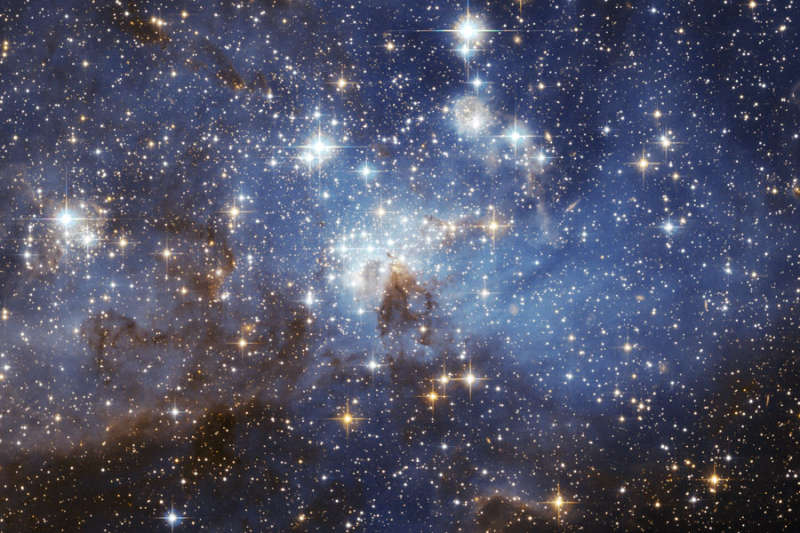Credit & Copyright: Hubble Heritage Team,
D. Gouliermis
(MPI Heidelberg) et al.,
(STScI/AURA),
ESA,
NASA
Explanation:
How do stars form?
To better understand this complex and chaotic process, astronomers used the
Hubble Space Telescope
to image in unprecedented detail the star forming region
LH 95 in the nearby
Large Magellanic Cloud galaxy.
Usually only the brightest, bluest, most massive stars in a
star forming region
are visible, but the
above image was taken in such high resolution and in such specific colors
that many recently formed stars that are more yellow, more dim,
and less massive are also discernable.
Also visible in the
above scientifically colored
image
is a blue sheen of diffuse
hydrogen gas heated by the
young stars, and
dark dust
created by stars or during
supernova explosions.
Studying the locations and abundances of
lower mass stars in star forming regions and around
molecular clouds helps uncover what conditions
were present when they formed.
LH 95
spans about 150
light years and lies about 160,000 light years away toward the southern
constellation of the
Swordfish (Dorado.
1999 2000 2001 2002 2003 2004 2005 2006 2007 2008 2009 2010 2011 2012 2013 2014 2015 2016 2017 2018 2019 2020 2021 2022 2023 2024 2025 |
Yanvar' Fevral' Mart Aprel' Mai Iyun' Iyul' Avgust Sentyabr' Oktyabr' Noyabr' Dekabr' |
NASA Web Site Statements, Warnings, and Disclaimers
NASA Official: Jay Norris. Specific rights apply.
A service of: LHEA at NASA / GSFC
& Michigan Tech. U.
|
Publikacii s klyuchevymi slovami:
LMC - star formation - BMO - Oblasti zvezdoobrazovaniya
Publikacii so slovami: LMC - star formation - BMO - Oblasti zvezdoobrazovaniya | |
Sm. takzhe:
Vse publikacii na tu zhe temu >> | |
